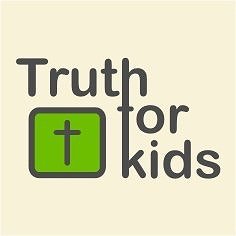How to tell a Bible story
with a difference
The power of a story
A story is a like a picture brought to life in one’s imagination. It has the potential to inspire, to create interest, enlighten, and correct wrong conduct. A Bible story has the power to change the heart and the ability to clarify abstract truths. Jesus used stories, called parables, to teach spiritual truths to adults. All the more as we teach these same truths to children, we should harness the power of stories to bring about spiritual understanding.
Telling the story
Whether you are telling of an event in the Bible or using a contemporary story to illustrate a truth, the way you tell the story can either make it come alive or cause it to fall flat.
Especially when it comes to well-known Bible stories, children who have heard a story numerous times tend to ‘switch off’ when they hear it told once again. When that happens, the value of the story, in terms of relating it to a spiritual truth, is diminished. It is important, therefore, especially when telling a familiar story, to spend some time thinking of a fresh approach.
Use a different perspective
Tell the story from a different point of view; for example, tell it the way a bystander or even an animal in the story would have seen the event. Imagine what the donkey was ‘thinking’ when he was untied and brought to Jesus, and what he thought as he passed through the crowd-lined street. How about a group of ants sitting around a huge pile of breadcrumbs discussing what they heard and saw as Jesus fed the 5000. When telling the story of Elijah and the widow, how about letting the boy tell his friend how he saw his last meal being prepared and the awesome miracle that followed. Be original but stick to the facts and refer to the Bible passage.
Tell the story differently by starting at an unusual point (not at the beginning). For example, start with the shepherds getting to the birthplace of Jesus and telling Joseph and Mary what they had just experienced out in the field.
Expression
As children are inclined to look at your face most of the time, make use of your eyes and facial expressions to hold their attention. Smile when you (as the person in the story) are happy; frown when you are worried or deep in thought. Make a mean face or an angry face or a sad face to portray the emotions of the character in the story.
Your hands further express what your face is saying. Wipe the sweat from your brow or the tears from your eyes. Chew your fingernails when you’re worried. Place your hand on your chin when you’re thinking deeply and hold a hand over your mouth when you’re amazed.
Use body language as a whole. Jump around when you’re excited; let your shoulders droop when you’re discouraged. Sit on the floor, fall to your knees or row a boat if that’s what your character is doing.
Voice
Project your voice by looking up and toward the children.
By speaking loudly and excitedly at one point, then suddenly quieting down to a whisper you will keep the ambient noise level down. The children’s attention remains focused because they aren’t bored by a monotonous voice and they will keep quiet in order to hear what you’re saying when you talk softly.
Increase the pace of your speaking to heighten tension; pause to create anticipation. If children are distracted and fidgety, stop suddenly with a phrase like "and then..." or "suddenly..." If there is an abrupt silence, children immediately look up to see what’s going on.
Dialogue
Dialogue is an active way of telling the story. It helps children identify who’s saying what in a more complicated story like Esther and the king. This could include minimal acting; however, the emphasis is on the interaction between the characters. Alternatively, a narrator could tell the story while two or more actors mime the drama.
If you are alone and wish to act out a dialogue between two people, you need to adapt your voice and mannerisms to suit the characters. A simple item like a coat or a walking stick could distinguish one character from another and amuse the children greatly as you hastily switch characters. You should also alter the position where you stand every time you switch characters. For example, one character will be on the left talking to an invisible character on the right and vice versa.
Involvement
Involve children in the story by letting them make appropriate sound effects at the right place in the story.
Let children act out simple parts while you tell the story. The acting needn’t be perfect but the storyline needs to be accurate and well told.
A story remains a story unless it is taken beyond the mere narrative to the place where it changes the lives of children. Without noticeably changing into a spiritual or moral gear at the end of the story (by saying something like, "Now, what can we learn from that story?") it is possible to continue into the application by connecting characters in the story with their world. For example, let the children imagine that they are one of the characters and talk about their feelings of fear, relief, delight etc. then take it from there. Have fun telling your next story!

